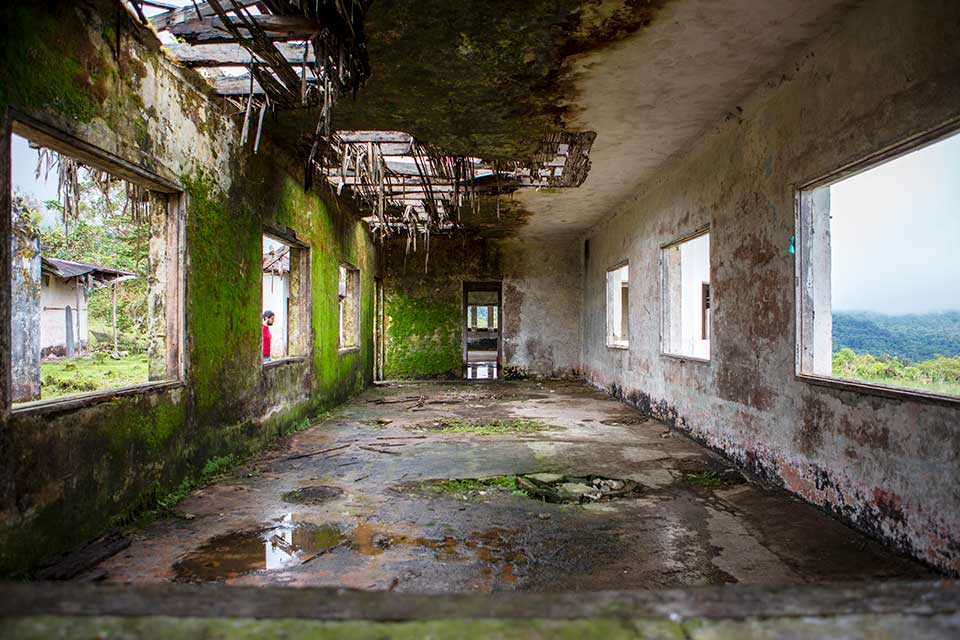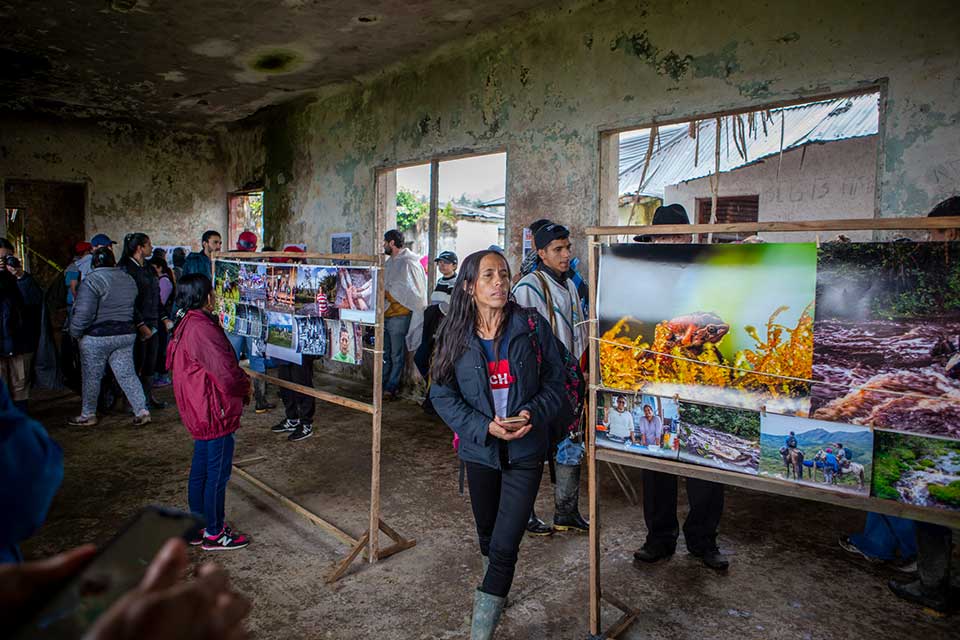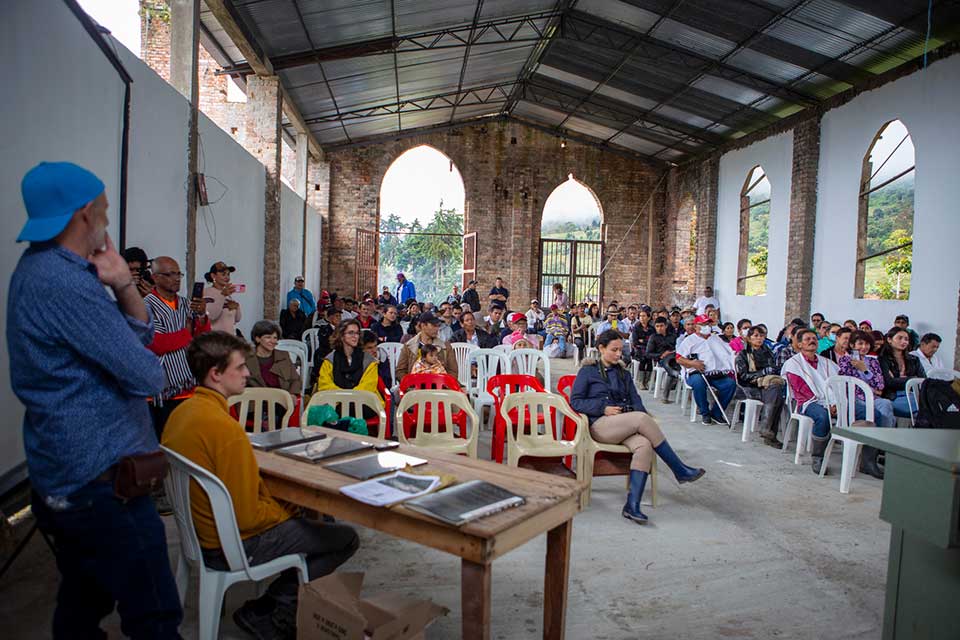La Época: Dispatches from a Negated History

By Esha Senchaudhuri
Journalism and a free press are widely viewed as critical for transparency in politics, yet they are also institutions which are likely to be suppressed in times of state fragility. In the decade-long period of La Violencia, a civil war fought in Columbia between 1948 and 1958, testimony is missing from entire battle zones that had once been doused with napalm and other horrors. Until recently this further silenced communities with eye-witness accounts of the atrocities. Using archival and oral histories, as well as a public humanities grant from the Mandel Center, Professor Elizabeth Ferry of the Department of Anthropology, aims to correct for this lacuna.
Professor Ferry worked with the organization OjoRojo Fábrica Visual, on the creation and dissemination of La Época, a hybrid newspaper, book and exhibition. La Época reflects what a newspaper might have said, had journalists been able to report from the rebel stronghold of Tolima during the 1955 Guerro de Villarica. The human side of the conflict is brought into clear relief through articles like ‘Huérfanos de la memoría’ (Orphans of Memory) which tells the story of young children displaced during the war; or ‘Villarica en Guerra’ (Villarica at War) which contains firsthand reports from agricultural workers who lost family to violence and famine. As a testament to its ability to humanize this epoch in Columbian history, La Época has become a part of the official documentation of the Columbian Truth Commission, which formed as a part of the 2016 Columbian Peace Accords.

The Guerro de Villarica (1955)
In La Época’s feature article ‘Sumapaz en el Ojo’, the roots of the 1955 conflict are shown to be anchored in historical tensions between agrarian laborers and landowners in the coffee- cultivating region of Sumapaz. Sumapaz is just south of the Rio Sumapaz and east of the Rio Magdalena, the site of many key battles in the Thousand Days War (1899 – 1902). In the intervening decades, several towns in Sumapaz continued to experience conflicts between workers and landowners. The article cites the 1933 massacre in the town of Iconozo in Tolima as an example of such conflict, where violence in a corn field left four dead, including a boy of twelve.
Articles in La Época are also careful to stress critical differences between the 1950s and previous eras of violence. Unlike in Villarica in 1955, the press in 1933 had been allowed to witness the burials of those killed in Iconozo, leading to greater awareness of violence against laborers. The start of the Cold War also meant that by the 1950s, the plight of workers became strategic talking-points in a much wider game of global politics. The assassination of Columbian communist leader Jorge Eliécer Gaitán in 1948 also meant that by the mid-1950s, conflicts like those in Tolima between workers and landowners were viewed as important extensions of decisions made in DC and Moscow.
Articles in La Época also take care to explain how even before the 1930s, Spanish colonization of Columbian lands from indigenous tribes had normalized violence in the area. A timeline of violence early in the newspaper demonstrates a decades’ long history of both violence caused by workers strikes, as well as violence against indigenous communities.
La Época & Collective Memory
Insights from the project have been added to the documents of the Truth Commission, which was formed from the 2016 Columbian Peace Accords. They integrate oral histories from witnesses and their descendants, ensuring that those affected retain a lasting voice in the efforts to prevent such tragedies from ever occurring again.

In addition to ensuring a record of firsthand insight into the Guerro Villarica, and facilitating a testament of community voice in the Truth Commission, the project advances a new function of public history. Traditional historical pedagogies have often been wary of oral testimony, arguing that it is less objective than other methods of establishing historical validity. Many scholars, both historians and anthropologists, have argued that this undermines the experiences of those colonized or disenfranchised, in favor of official government documents curated by elites. Through efforts such as those of Elizabeth Ferry and the team at OjoRojo, the accounts of agricultural laborers now have an official place amongst such documentation.
The project was inaugurated in June 2022 in Tolima, at an event sponsored by the Mayor’s Office of La Colonia, a village which had suffered from disastrous napalm attacks in 1955. The event was co-sponsored by the Catholic Archdiocese of Villarica, and attended by 300 people including former combatants and those displaced by war. The exhibition was viewed at La Colonia, as well as at the Centro de Memoria in Bogotá. It will also be shown at Universidad de Valle, the Universidad de Tolima and George Washington University.